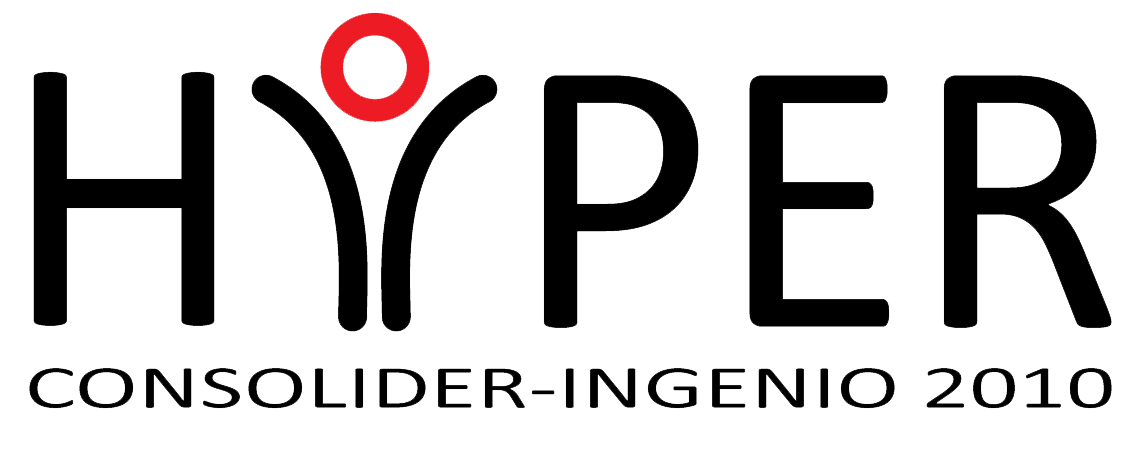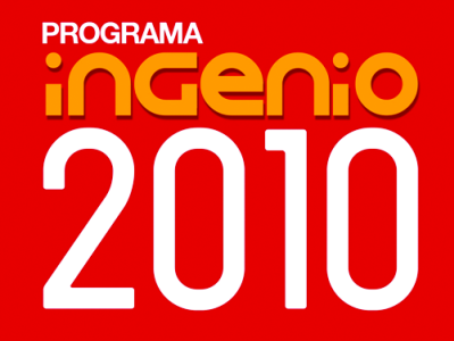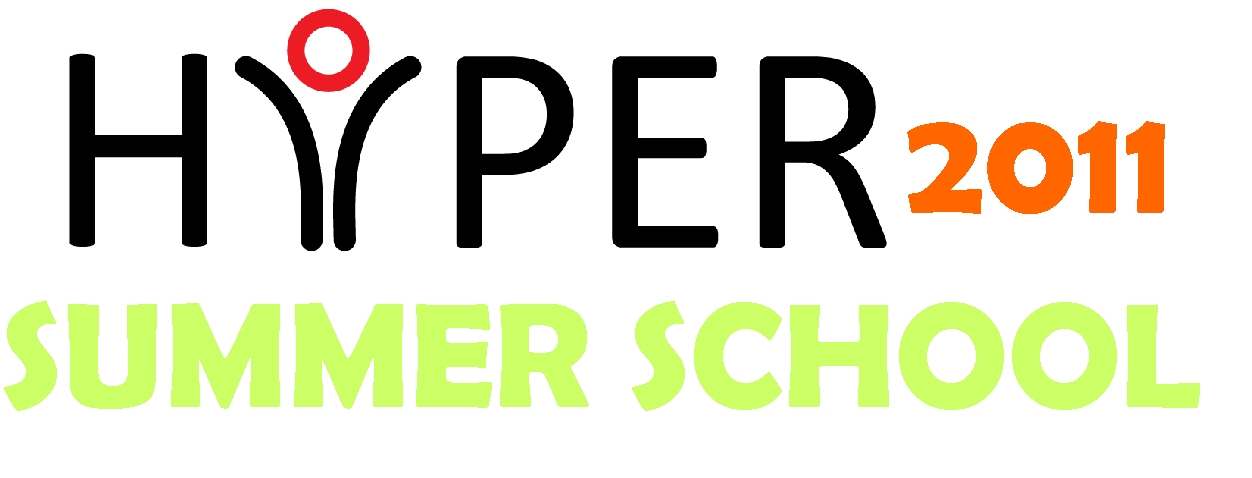Program
This page will be updated periodically
| Sun, 16 | Mon, 17 | Tues, 18 | Wed, 19 | Thu, 20 | Fri, 21 | |
|---|---|---|---|---|---|---|
| 07:30 - 8:30 | Breakfast | |||||
| 8:30 - 9:30 | INTRODUCTION | TALKS/ BOOK TIME | ||||
| 9:30 - 10:30 | TALKS/WORKSHOPS/ BOOK TIME | |||||
| 10:30 - 11:00 | Coffee Break |
|||||
| 11:00 - 12:00 | TALKS/ WORKSHOPS/ BOOK TIME | POSTER SESSION | TALKS/WORKSHOPS/BOOK TIME | |||
| 12:00 - 13:00 | TALKS/ WORKSHOPS/ BOOK TIME | |||||
| 13:00 - 14:00 | Lunch |
|||||
| 14:00 - 15:00 | TALKS/ WORKSHOPS/ BOOK TIME | Closing Ceremony | ||||
| 15:00 - 16:00 | Bus (15:15) | |||||
| 16:00-16:30 | Coffee Break | |||||
| 16:30-17:30 | TALKS/ WORKSHOPS/ BOOK TIME | |||||
| 17:30-19:00 | Free time | |||||
| 19:00-21:00 | Buses (19:00, 20:30) | |||||
| 21:00-22:00 | Welcome cocktail | Dinner | Gala Dinner | |||
- Prof. Thomas Sinkjær - "Motor control in spastic humans"
In clinical practice the dominant view is that exaggerated tendon reflexes are responsible for muscle hypertonia which then leads to a spastic movement disorder. Consequently, most anti-spastic treatments are directed at reducing reflex activity. A central motor lesion is associated with a loss of supraspinal drive and a defective utilization of afferent input with an impaired behaviour of short- and long-latency reflexes. This leads to a paresis and a mal-adaptation of the movement pattern. Secondary changes in mechanical muscle fibre, collagen tissue and tendon properties (e.g. loss of sarcomers; sub-clinical contractures) result in spastic muscle tone, which compensates for paresis but can overshoot in severe paresis. Consequently, anti-spastic drugs should be applied with caution in mobile subjects. In most cases, their effects are cosmetic or might even hamper mobility by accentuating paresis. Therapeutic interventions in patients with spastic paresis of either spinal or cerebral origin should be focused on the training, re-learning and activation of residual motor function, and the prevention of secondary complications such as muscle contractures. In this presentation I will focus on spastic movement disorders and how electrical therapy in some cases can help to reduce spasticity and improve motor function.
- Prof. Dejan B. Popovic - "Neuroprosthesis: A tool for neurorehabilitation or functional compensation?"
Techniques to treat central nervous disorders are based on: (1) replacement of lost neural activity; (2) retraining of the central nervous system by repetitive practice; (3) neuromodulation, i.e., artificial restoration of the balance of activities in affected regions of the central nervous system. We define neurorehabilitation as the integration of the three above listed techniques, that is, as the augmentation of diminished or generation of absent function by use of electrical, magnetic, and mechanical assistance of the neuromuscular system in parallel with the task oriented intensive voluntary exercise. The base for this approach are results from several studies where excitability of the human brain and spinal cord was documented when exposed to stimulation. Recent experiments at our and other laboratories suggest that patterned nerve stimulation of specific anatomical sites results in desired sensory-motor pathways activation, which elicits functional motor responses in patients with senory-motor disability. An important element when considering which method would be the most beneficial are the type and level of impairment, but also the time of the application of the treatment after the onset of disability.
- Prof. Paolo Bonato - "Can Children with Cerebral Palsy Learn How to Walk from a Robot?"
Cerebral Palsy (CP) is a group of neurological disorders caused by damage to the brain at birth, during infancy or in early childhood that affects about 1 in 500 newborns. Diminished gait proficiency is one of the main physical disabilities in children with CP. In past years, several studies have demonstrated the beneficial effects of intensive task-specific gait training in children with CP. Body-weight-supported treadmill training (BWSTT) has recently gained the interest of clinicians as a task-specific gait training technique. The use of a body-weight support system allows severely affected children to benefit from gait therapy. Robotics can facilitate BWSTT. Our own work has shown that clinical outcomes of robotic-assisted gait training in children with CP are encouraging but they are marked by high variability. Clinical outcomes are mediated by motor learning, which is in turn the result of motor adaptations that occur during the interaction between the child and robot. We have hypothesized that children who do not respond to robotic-assisted gait training have an impaired ability to generate motor adaptations. In this talk, we will discuss methodologies to quantify motor adaptations, their applicability to children with CP, the relationship between motor adaptations and motor learning, and the use of emerging techniques to facilitate the generation of motor adaptation strategies.
- Prof. W. Zev Rymer - "Rehabilitation Robotics: a critical reappraisal"
We have now had more than 15 years experience in the application of rehabilitation robots for the treatment of motor impairments after stroke and spinal cord injury. In general, the results have not reached the expected levels of improvement, for either lower extremity or upper extremity therapies, and in several instances the robotic devices have not even matched the outcomes generated by skilled therapists working on matched control populations. In this presentation, we will review the current experiences with both upper extremity and lower extremity robotic systems, and explore the reasons underlying the limited successes experienced to date. We will also focus on questions of timing and intensity of therapy, as well as on the constraints imposed by the lack of a suitable theoretical framework for these therapeutic interventions.
- Prof. Roberto Merletti - "Prevention and rehabilitation of neuromuscular disorders using High Density Surface EMG"
High Density Surface EMG (HDsEMG) is obtained by means of two dimensional electrode arrays that provide an image of a) the instantaneous surface EMG amplitude distribution in space and its time course, b) the spatial distribution of amplitude and/or frequency variables of surface EMG computed over individual time epochs (usually of 0.25s to 1s duration). Electrode arrays range from 16 to hundreds of contact points over a muscle or a muscle group. An extensive amount of anatomical and physiological information can be obtained from these images, ranging from the activity of individual motor units, to maps of muscle activity and localized myoelectric manifestations of muscle fatigue. Applications of these information range from biofeedback in rehabilitation to monitoring of muscle activity during occupational tasks or sport performances, from monitoring posture to playing musical instruments or EMG-controlled games. Applications in games, in prevention of work related disorders and in prevention of child delivery lesions will be described.
- Prof. Jonathan R. Wolpaw - "Using Targeted Spinal Cord Plasticity for Neurorehabilitation"
Neurological rehabilitation seeks to restore skills such as locomotion that have been impaired by injury or disease. Present therapies consist mainly of the repeated practice of these skills, with the expectation that practice will induce plastic changes that improve function. Although this strategy is logical and often beneficial, it is seldom fully effective. The skills that rehabilitation attempts to restore normally depend on plasticity throughout the CNS, from the cortex to the spinal cord; and the location and nature of the damage that impairs performance differs widely from person to person and from disorder to disorder. Thus, the changes that are needed to restore a skill are also likely to differ widely across people. New therapies that can induce changes in specific neuronal pathways, and can thereby target each person's particular deficits, might substantially improve rehabilitation outcomes. Operant conditioning protocols can modify spinal reflex pathways. Because these pathways participate in important skills such as locomotion, conditioning protocols could reduce the disabilities due to spinal cord injuries, strokes, and other disorders. In rats or humans with partial spinal cord injury, conditioning of the soleus H-reflex can improve locomotion. Because they can target specific pathways, conditioning protocols can address an individual's particular deficits, and might thereby complement current therapies. They could be particularly useful when significant spinal cord regeneration becomes possible. At that point, precise methods will be needed for reeducating the new spinal neurons and synapses to function effectively.
- Prof. Romulo Fuentes - "Electrical modulation of neural circuits as emergent therapy"
Motor and cognitive impairments resulting from neurological injuries or neurodegenerative disorders have a devastating effect on the life of the patients and their caretakers, and given the aging of the population, on the whole society. Since several decades, a big effort has been conducted to understand the basic molecular and cellular mechanisms governing the neuronal function in healthy and pathological conditions, resulting in the development of pharmacological therapies that target mainly the neuromodulatory neurotransmitter systems. While this approach is able in specific diseases to alleviate symptoms, so far it has not been able to cure these diseases. Parallel to the molecular/cellular studies, another approach has been developed, based on implantable devices capable to modulate the activity of neural circuits. These emerging therapies proved to be extremely effective reestablishing functionality, even in the cases that are refractory to the pharmacological approach, and might in the future revolutionize the way we understand and treat the neural pathologies.
- Prof. Jose L. Contreras-Vidal - "Neural interfaces as tools for reverse-translational human studies of brain plasticity"
Breakthroughs in the non-invasive decoding of real/visual/imagined movement from scalp electroencephalography (EEG) now enable accurate prediction of upper extremity movement and gait in humans to reliably drive a BMI. The EEG time-domain decoders enable subjects to accomplish closed-loop brain to computer interface control in a single session, making noninvasive BMI systems to control multi-functional prosthetics/orthotics clinically feasible. In this talk I will outline the engineering, clinical, regulatory challenges and potential solutions that we need to deploy to develop a reliable EEG-based BMI system to powered lower-limb exoskeletons for clinical use in patients with spinal cord injury and stroke. Moreover, I will discuss a neural interface approach that allows reverse-translational human studies of brain plasticity. In this approach, multi-modal signals acquired during human BMI training using fixed decoders are harnessed to understand changes in cortical activity associated with behavioral change. These emergent biomedical tools and neurotechnologies open a new window of opportunity for repairing or enhancing motor function while increasing our understanding of the neural networks involved in the acquisition, planning, and production of complex motor skills.
- Prof. David Reinkensmeyer - "Robotics and Sensory Motor Restoration"
Advances in robotics are assisting people with sensory motor impairment in achieving greater mobility. For example, exoskeletons help people with paralysis to walk and use their hands, and robotic training devices allow movement training to be delivered in more intense, motivating, and quantifiable ways. Yet, even with these advances in rehabilitation technology, individuals with mobility impairment still too often experience too little recovery. This talk will describe efforts of rehabilitation, robotics, and neural engineers to develop technologies to assist the injured motor system in reorganizing in a way that best promotes functional recovery. A central theme is that technologies that provide an optimal level of challenge to the patient produce better therapeutic outcomes; a key question is whether optimal recovery requires more sophisticated assistive technologies, such as multi-joint exoskeletons, that can assist in more naturalistic movement. Ultimately, treatments that combine regenerative or plasticity-enhancing therapies with intensive motor learning experiences will facilitate neuro-recovery beyond what is currently possible. These treatments will require a new science of combination therapies to be developed.
- Prof. Miguel Nicolelis - "Active tactile exploration using a brain-machine-brain interface"
Brain-machine interfaces use neuronal activity recorded from the brain to establish direct communication with external actuators. It is hoped that brain-machine interfaces can be used to restore the normal sensorimotor functions of the limbs, but so far they have lacked tactile sensation. I will show the operation of a brain-machine-brain interface (BMBI) that both controls the movements of an actuator and allows signalling of artificial tactile feedback through intracortical microstimulation (ICMS) of the primary somatosensory cortex. Monkeys performed an active exploration task in which a computer cursor or a virtual-reality arm was moved using a BMBI that derived motor commands from neuronal ensemble activity recorded in the primary motor cortex. ICMS feedback occurred whenever the actuator touched virtual objects. Temporal patterns of ICMS encoded the artificial tactile properties of each object. Two monkeys operated this BMBI to search for and distinguish one of three visually identical objects, using the virtual-reality arm to identify the unique artificial texture associated with each. These results suggest that clinical motor neuroprostheses might benefit from the addition of ICMS feedback to generate artificial somatic perceptions associated with mechanical, robotic or even virtual prostheses.
- Prof. Dario Farina - "Asynchronous Detection of Motor Intention and Precise Temporal Association with Artificial Afferent Feedback: A New Method for Modulating Cortical Excitability"
The causal relation between motor commands and afferent volley, with precise temporal delay, may be used to change the cortical excitability in humans. An example of this approach is the method called paired associative stimulation (PAS), in which cortical stimulation with transcranial magnetic stimulation (TMS) is paired with electrical peripheral stimulation. An alternative way to influence cortical excitability is to use the naturally generated brain activation (instead of TMS) when a person imagines (or attempt to execute) a movement and to combine this with the afferent inflow that would be generated had the movement been performed. With this approach, it has been shown that the excitability of the neural projections connecting the relevant brain areas to the target muscle is increased only when the afferent inflow arrives during the highest cortical activation phase (measured by EEG). This underlines the important of a precise causal relation between motor commands and afferent feedback in inducing plastic changes. Furthermore, the changes are specific to the task and the neural connections between the brain and muscle involved in the task. This novel intervention can be implemented in a fully self-paced paradigm. The highest cortical activation associated to movement imagination (or to attempting the movement) can indeed be automatically detected by online processing of the EEG to trigger an external device (e.g., electrical stimulator). The online detection of cortical activation associated to movement imagination (motor evoked cortical potential, MRCP) is equivalent to an asynchronous brain-computer interfacing (BCI) system that triggers an external device. This full asynchronous BCI system with triggering of electrical stimulation has been tested recently on healthy volunteers and on stroke patients, showing that, despite limited sensitivity and specificity of the detection due to the poor signal-to-noise ratio in single-trial EEG, it promotes plastic cortical changes with a limited number of trials. In stroke patients, such intervention, repeated over several days, has also been shown to improve functional recovery. In conclusion, the use of cortical signals to trigger, with precise delay, an artificial afferent volley may have the potential of a new effective therapy for motor neurorehabilitation.
- Prof. Marco Molinari - "Perspective of new Therapies in Stroke Rehabilitation"
The human brain structure and connectivity continues to change throughout life and this property of the neural tissue has been termed neuroplasticity[1]. Although neuroplasticity is often considered an important mechanisms to sustain recovery it must be stress that it can be both detrimental or useful. In this line it is extremely important to understand the rules that control the plastic changes of the central nervous system in order to guide recovery after brain damage. Our knowledge of brain plasticity mechanisms is improving everyday and at present we can directly address the effects of rehab therapies on brain organization and functional recovery. This is important in neurological disorders and particularly in stroke that still represents the leading cause of long-term motor disability among adults in the world. Even years after the initial stroke the human brain still retains the capacity to reorganize in response to interventions that can influence recovery of motor function. Understanding and influencing this form of neuroplasticity is critical for the development of better therapies for patients [2]. Interactions among exercise, pharmacology and inhibition of neurodegenerative mechanisms represent the key factor for positively guide recovery. In this framework the availability of new technical environments that allow to directly control exercise modalities and brain changes represent a highly challenging field to develop new effective rehab protocols[3]. The importance of exercise in shaping neural circuits is well known nevertheless our understanding of which is the right exercise for a given pathology/patients is still extremely scarce ([4;5] [6;7]). Experimental and clinical data focusing on the importance of tailoring exercise for each patient and on how technological advances are helping us in changing our everyday approach to stoke rehab will be presented and discussed.



.jpg)

